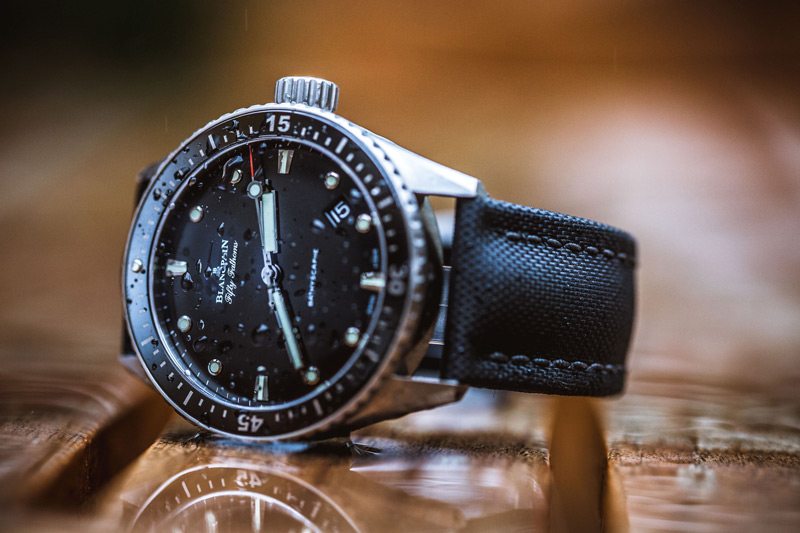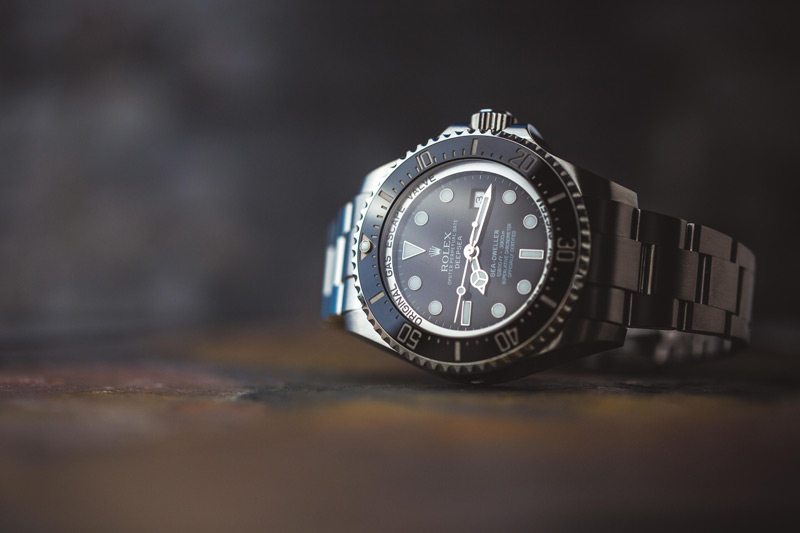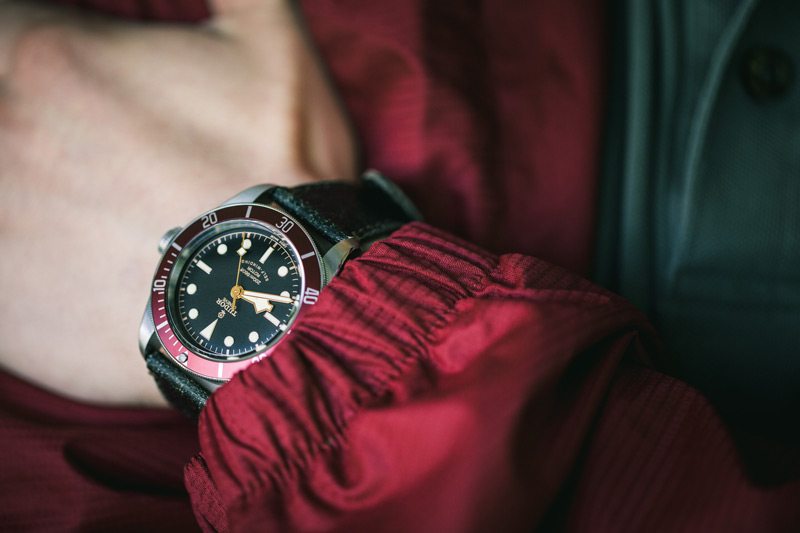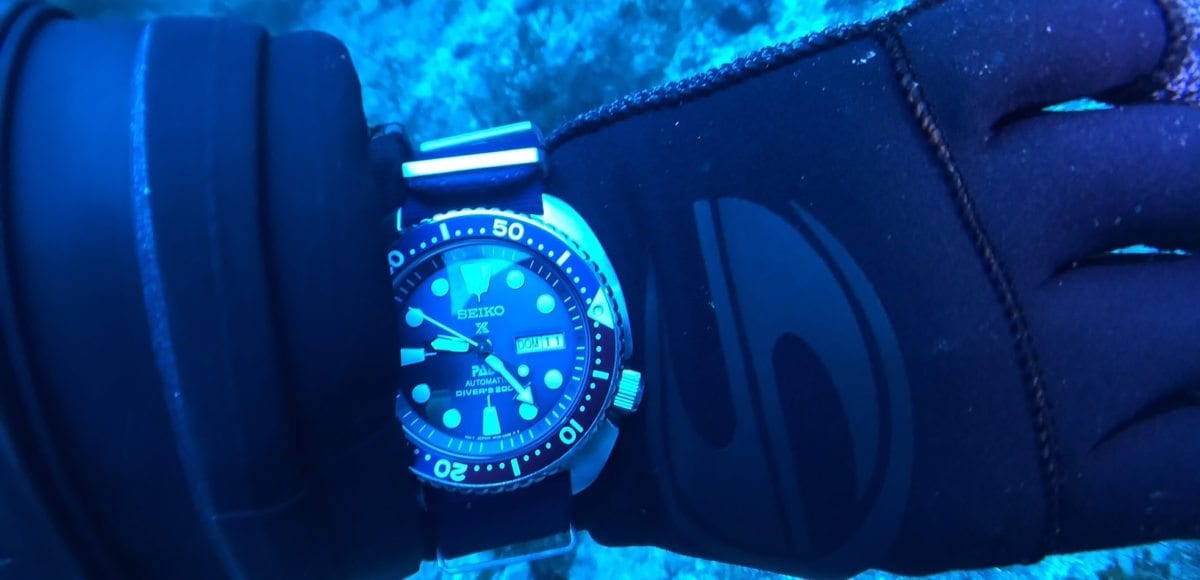Dive Watch 101
The history of diving as a sport and science dates back to the early twentieth century. Before the age of diving computers and other advanced technical equipment, there was the dive watch. Dive watches serve the primary purpose of recording the time a diver spends underwater. Yet, over time, they’ve found a place on the wrists of desk divers and sports enthusiasts alike. Today, many people consider any water-resistant watch to be a dive watch, when that’s not always the case. So, what’s a dive watch? How do you use a dive watch bezel? What should you look for when starting your collection? Get answers from Crown & Caliber.
What’s a Dive Watch?
If a dive watch is more than just a water-resistant timepiece, you may be wondering, what’s a dive watch? One particular quality standard sets a dive watch apart from other water-resistant timepieces: ISO certification. The ISO is the International Organization for Standardization. They have a specific set of guidelines that a timepiece must meet to be an ISO dive watch. They spell out these regulations in the ISO 6425 standards. They outline a list of requirements and features a timepiece must include to be an ISO dive watch. In addition, they dictate testing parameters and design compliance.

ISO Standards and Testing Procedures
According to the ISO 6425 standards established in 1996, mechanical dive watches must possess six key attributes. The first is a rotating bezel. It must specifically allow divers to track the total elapsed time under water from the start of their dive. The second is luminescent features on the dial and hands that allow for easy readability under water. The third is a screw-down crown that keeps water from entering the watch. The fourth is a case made of water-resistant materials that protect the watch from corrosion and rusting. The fifth is a movement that has both shock resistance and magnetic resistance. Lastly, the sixth and final requirement is a minimum water resistance of 100 meters.
The ISO 6425 testing standards state that a watch must undergo several pressure tests. These ensure that the case, crown, and crystal are properly water-resistant and can withstand plenty of pressure. A watch that conforms to ISO 6425 Standards is marked with the word DIVER’S. This distinguishes it from other water-resistant timepieces. It’s important to note that the ISO doesn’t actually certify or test watches themselves. This means you’re trusting the watch company’s compliance when it comes to an ISO dive watch.

The Cartier Calibre de Diver has the ISO-Specified wording on the casebackAn important thing to note: ISO doesn’t actually certify or test watches themselves. Which means that you’re going off the watch company’s word when it comes to an ISO-standard watch.
So, ISO: Yes or No?
Dive watches were around long before ISO introduced the 6425 Diver’s watch standards in 1996 (Read: Dive Watch History). And watch brands spent decades perfecting and testing the dive watch to extremes. So it’s very likely (even guaranteed) that you have plenty of dive-worthy watches out there that perform just fine without the ISO stamp of approval.

The Rolex DEEPSEA Sea-Dweller exceeds ISO Standards
What you have to understand that ISO standards are a minimum requirement, and many companies often develop watches that exceed them (Rolex’s DEEPSEA Sea-Dweller is a good example). So you can find a serviceable dive watch that doesn’t have the DIVER’S on the case or dial. It all depends on what you’re really looking for.
Characteristics of a Dive Watch
In addition to the six attributes required by the ISO 6425 standards, there are a couple other traits you can expect to see in modern dive watches. The first is a specific set of bezel markings. The standard typically showcases the first fifteen minutes highlighted or differentiated in some way. The second feature is a helium escape valve (HEV). This key function helps divers looking to explore great depths for prolonged periods of time. Helium atoms are extremely small and can easily slip inside a watch case at greater depths. The build-up of these helium atoms inside of the watch case can damage the watch by creating pressure that pops the crystal off of the case. Instead, a HEV helps to relieve the pressure during decompression and safely expel helium out of the watch.
The Dive Watch Bezel
As we’ve mentioned, the dive watch bezel is a signature characteristic of the dive watch. Over the years, the dive watch has evolved and so has the dive watch bezel. Watchmakers began looking to solve additional problems for divers to make diving safer. Soon, the dive watch bezel began incorporating ways for divers to track more than overall immersion time. They could calculate no-decompression times and decompression stops long before modern digital dive computers were developed.
If you’ve ever looked closely at a dive watch bezel, it typically features a combination of stick markers and numbers. It can seem mind boggling as to how these markings allow for all these intricate and important calculations. It’s understandable that you may be wondering how to use a dive watch bezel. First, let’s look briefly at the process divers follow for decompression.
In the simplest terms, every depth has a maximum time divers can tolerate before they have to pause on the way to the surface to decompress. Divers must take breaks at certain depths on the way back to the surface once they exceed this “no-decompression limit.” They must take these particular breaks while their respiration clears the tissues of the excess nitrogen that builds up at great depths. If they don’t follow this process, they can get the bends. The design intention of the most basic form of a dive watch bezel is used with the set of tables that indicate the no-decompression limits for each depth. To use the bezel, the diver sets the zero mark (often a luminous arrow) opposite the minute hand. As dive time elapses, it shows on the dive watch bezel.
In 1967, Doxa patented a special “no-decompression” bezel. It features a double scale with the no-decompression limits engraved on the outer ring, eliminating the need for a table. Using this bezel begins in the same fashion – the diver sets the zero mark to the minute hand. As the diver descends, the additional scale indicates when to surface for depths from 60 to 190 feet.
Which Kind of Dive Watch is Right for You?
Not all dive watches are created equal. There are a few factors to consider when choosing which dive watch is right for you. If you’re an experienced diver, a watch with a higher water resistance is important. The best tools for those challenging deep dives are watches with a water resistance rating of 200m or greater. You’ll also want to look for a watch with a 316L stainless steel construction. A watch with an anti-reflective sapphire crystal to minimize underwater dial distortions is another plus. Lastly, choose a model with either a metal bracelet with a diver’s extension or a long rubber strap that can easily fir over a wetsuit. A great option would be one of many classic dive watches, like the Tudor Pelagos.
On the other hand, you may be sticking to shallow waters. In that case, you really only need a watch that meets the minimum ISO 6245 standard of 100m. Look for a model at a budget friendly price point, Choose a watch with durable construction that will perform well in the sea or on dry land. Since it will likely be multi-purpose, it might be nice to look for additional functions like a GMT or chronograph. Another way to take your watch from a casual dive to a night on the town is strap versatility. Look for a model that’s easily compatible with a nylon strap, leather band, or metal bracelet. A watch like the OMEGA Seamaster GMT would be a smart, well-rounded choice.

The Tudor Black Bay has a depth rating of 200m
Classic Dive Watches Under $7,000
Maybe budget is more of a factor when picking the best dive watch. Perhaps you simply want to explore more options. Here are some classic dive watches under $7,000.
The first is IWC’s special edition Aquatimer “Tribute to Calypso.” The distinctive model pays homage to the legendary explorer Jacques-Yves Cousteau. He spent many years traveling with the renowned “Calypso” research vessel. IWC produced the “Tribute to Calypso” in a limited quantity of just 2500 pieces, making it particularly unique.
Next up is the classic Rolex Submariner. This model doesn’t need much introduction. It’s the ultimate dive watch, boasting an iconic design that has remained largely unchanged for over 60 years. Since its inception in 1953, it’s set the standard.
Panerai’s longstanding history of dive watches is epitomized in the modern Luminor Submersible. At first glance, the Luminor Submersible reflects the distinct aesthetic that’s uniquely Panerai. However, the exclusivity of the model comes from its unconventional development. In 1995, legend Sylvester Stallone was filming the movie Daylight and requested a customized Luminor to wear during underwater scenes. The Luminor Submersible was born, first in a limited run and later as a permanent collection.
Breitling may be most widely known for their pilot watches. However, they’re an equally superior producer of dive watches. The Superocean Heritage celebrates the model’s 50th anniversary. It features a modern design that’s equal parts fashion and function.
When you think of dive watches, you may not consider a brand like Cartier. However, their Calibre de Cartier is worthy of a second look. It was the brand’s first sport watch to feature their own in-house movement. The rugged dive watch aesthetic is a bit of a departure for Cartier. However, the simple, straightforward design approach in combination with iconic features, like sword-shaped hands, gives a nod to the brand’s classic style.
Maybe you’re looking for a dive watch with a more unconventional design that’s a departure from the classic dive watches. Look no further than the BR 02 Marine. Bell & Ross takes an avant-garde approach with modern black carbon coating offset by a pop of aquatic blue accents. This sleek and sporty model is a fun and unique alternative to the typical dive watch.
Last but certainly not least is the OMEGA Seamaster Professional 300M James Bond. The debut of OMEGA’s Seamaster on 007’s wrist in the 1990s forever linked the timepiece with the movie franchise. Pierce Brosnan first wore this particular variation in the 1995 film GoldenEye. Needless to say, this model is not just an impressive tool watch – it’s a power watch.
Editor’s Note: This article was originally published on August 6, 2015. We have updated it to include more information.
Image Credits: Header; OMEGA Forums. 1-4; Crown & Caliber.
Get More Articles Like This in Your Inbox
We're constantly creating great content like this. So, why not get it delivered directly to your inbox? By subscribing you agree to our Privacy Policy but you can unsubscribe at any time.







Michael | May 9, 2017
|
So panerai has no screw do crown. Theref its not a proper divers watch???
Sonya Myers | May 9, 2017
|
Most Panerai watches are depth-rated to at least 100m, which means they should be fine to use in diving. But according to ISO standards, no, they aren’t “diver’s watches”.